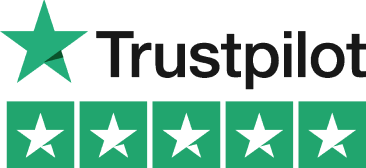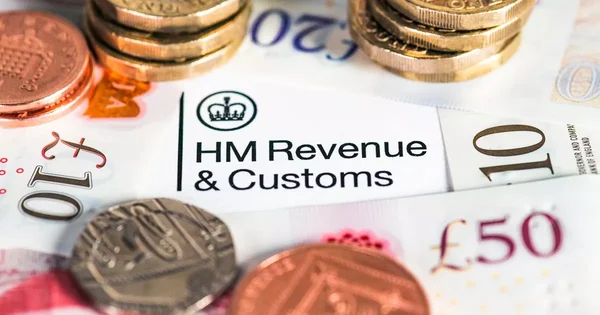Let’s Break This Down Together...
Earning money outside your main job sounds great, until tax time hits. Many side hustlers aren’t sure when or how to report that extra income.
This guide explains what counts as taxable side hustle income, when to register for Self Assessment, and how the £1,000 trading allowance works. You'll also learn about filing deadlines, allowable expenses, and the importance of good record-keeping.
By understanding the rules now, you can avoid penalties later and keep more of what you earn. Let’s dive in!
Understanding Side Hustle Income
Side hustle income covers any money you make outside your main job, from freelance work and online selling to cryptoasset-related activities. All of it is taxable and must be reported on your tax return, even without formal invoices or payslips.
To meet your tax obligations, it’s essential to keep accurate records of income and expenses. Digital record keeping is becoming increasingly important, especially with quarterly updates and Making Tax Digital on the horizon.
If you’re unsure about what to declare or how to complete your return, you can refer to GOV.UK or speak to a tax professional. Staying organised ensures you pay the right amount of tax and avoid surprises.
The £1,000 Trading Allowance Explained
The trading allowance is HMRC’s gift to casual earners, letting you earn up to £1,000 from side hustle income each tax year completely tax-free.
This allowance applies across all your side ventures combined, not £1,000 per activity, so income from things like Etsy sales, freelance work, or renting a room must be totalled together. Common side hustles include online selling, content creation, and property rental, all of which count toward the allowance.
If your expenses exceed your income, registering might still be beneficial, as you could offset losses against other earnings. The £1,000 cap applies to total gross income from all additional income streams.
The allowance resets every tax year (6 April to 5 April), giving you a fresh start annually.

When You Must Register for Self-Assessment
You need to register for self-assessment if your side hustle brings in more than £1,000 gross income (before expenses) in a tax year. If you operate as a sole trader, you are required to register for self assessment. If you need to register, HM Revenue & Customs will issue you a Unique Taxpayer Reference to complete your registration.
This rule applies even if you’re already paying tax through PAYE in your main job. HMRC treats your employment and self-employment separately. Registering for self assessment is necessary if you need to pay tax on your side hustle income, and you will need to file an assessment return or self assessment return.
Registration ensures you pay both Income Tax and National Insurance contributions. Failing to register can result in penalties for both Income Tax and National Insurance contributions.
The deadline to register is 5 October following the tax year in which you exceeded the threshold. For example, if you started earning above £1,000 between April 2024 and April 2025, you’d need to register by 5 October 2025. Missing deadlines can result in tax owed and penalties.
Being “self-employed” in HMRC’s eyes isn’t about what you call yourself. It’s about what you do. Regular activity aimed at making a profit typically counts as self-employment, even if you don’t consider it a proper business yet.
Filing Your Tax Return as a Side Hustler
Filing your tax return as a side hustler is a crucial step in meeting your tax obligations and staying on the right side of HM Revenue and Customs. Once you’ve registered for self-assessment and received your Unique Taxpayer Reference (UTR), you’ll be able to file your assessment tax return online. When completing your tax return, make sure to include all your hustle income and side hustle income, and don’t forget to claim any allowable expenses to reduce your tax bill.
It’s a good idea to file your tax return early; this helps you avoid the January rush and gives you plenty of time to sort out any issues. While you don’t need to pay your tax bill immediately upon filing, any tax owed must be paid by 31 January following the end of the tax year. Filing promptly also means you’ll have a clear picture of your tax situation and can plan for any payments due.

Important Tax Deadlines for Side Hustlers
Once registered, you’ll need to complete a self-assessment tax return by 31 January following the end of the tax year. Returns for 2024/25 are due by 31 January 2026.
Filing early puts you in control and helps you avoid the January rush and January deadline rush. Early preparation is key to managing your tax returns and completing your assessment tax return online smoothly.
Any tax you owe is also due by this 31 January deadline. You do not need to pay immediately when you file; the tax owed is due by the official deadline. You may have additional payments due on 31 July if you’re making “payments on account” towards your next tax bill.
Missing the registration deadline can trigger an automatic £100 penalty. This increases the longer you leave it, potentially reaching thousands for very late registrations.
Set calendar reminders for these key dates. This is especially important if your side income fluctuates and you might cross the threshold unexpectedly during the year
Record-Keeping for Side Hustlers
Good records are your best friend when running a side hustle, even if it seems small. Keep track of all income and expenses for at least five years.
From April 2026, making tax digital will require digital record keeping and quarterly updates for sole traders and those with property rental income. You will need to use compatible software for tax digital compliance.
Simple spreadsheets work for many side hustlers, but dedicated apps can make the job much easier. They automatically categorise transactions and store receipt images.
Try to separate business and personal finances where possible. A dedicated bank account for your side hustle makes record-keeping much cleaner.
Save evidence of all business costs – from materials and postage to website fees and travel expenses. These deductions can significantly reduce your tax bill once you’re registered.

Final Thoughts
Registering for self-assessment isn't something to fear. It's simply part of running a successful side hustle that's growing beyond the £1,000 allowance.
Missing the registration deadline is far worse than registering when you didn't strictly need to. When in doubt, it's better to register than risk penalties.
With clear records and timely registration, you can focus on what matters most. Growing your side venture and enjoying the extra income it brings should be your priority.
Pie tax: Simplifying Side Hustle Tax
Tax shouldn't be the thing that stops you from turning your passion into profit.
Pie tax, the UK's first personal tax app, automatically tracks your side hustle income alongside your main job. This gives you a complete picture of your tax situation.
We'll also remind you of important registration deadlines, so you never face unexpected penalties.
Our simple expense tracking helps you maximise legitimate deductions. This could potentially save you hundreds in unnecessary tax payments.
Pop over to our website if you'd like to see how we make side hustle tax management painless and straightforward.











